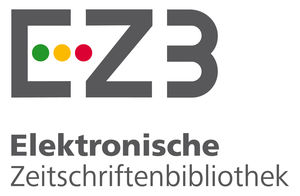Questioning definitions at university: the case of analysis
DOI:
https://doi.org/10.23925/1983-3156.2019v21i4p142-156Palabras clave:
curve integrals, paradigm, mathematics educationResumen
Résumé
A la base d’un cas particulier, lié à la définition des intégrales curvilignes en analyse vectorielle, nous examinons un dessin modeste visant à réaliser le paradigme du « questionnement du monde » dans l’étude d’un certain type de définition en analyse, et plus généralement les conditions et contraintes rencontrés par ce paradigme dans l’enseignement supérieur des mathématiques.
Abstract
Based on a case study on task design related to the definition of curve integrals in vector analysis, we examine a modest design for realizing the paradigm of “questioning the world” in the study of a certain type of definition in mathematical analysis, and more generally, the conditions and constraints this paradigm meets in university mathematics education.
Citas
Ando, H., Haagerup, U., & Winsløw, C. (2016). Ultraproducts, QWEP von Neumann algebras, and the Effros–Maréchal topology. Journal fuer die Reine und Angewandte Mathematik, 715, 231-250. DOI: 10.1515/crelle-2014-0005
Barbé, J., Bosch, M., Espinoza, L., & Gascòn, J. (2005). Didactic Restrictions on the Teacher’s Practice: The Case of Limits of Functions in Spanish High Schools. Educational Studies in Mathematics, 59(1-3), 235-268.
Bosch, M., & Winsløw, C. (2015). Linking problem solving and learning contents: the challenge of self-sustained study and research processes. Recherches en Didactique des Mathématiques, 35(2).
Chevallard, Y. (1985). La Transposition didactique: du savoir savant au savoir enseigné. Grenoble: La Pensée Sauvage.
Chevallard, Y. (1998). Questions vives, savoirs moribonds : le problème curriculaire aujourd’hui. Paper presented at the Défendre et transformer l’école pour tous, Marseille. http://yves.chevallard.free.fr/spip/spip/article.php3?id_article=19
Chevallard, Y. (2002). Organiser l’étude 3. Écologie & régulation. Paper presented at the 11ème école de didactique des mathématiques.
Chevallard, Y. (2004). Vers une didactique de la codisciplinarité. Notes sur une nouvelle épistémologie scolaire. Paper presented at the Journées de didactique comparée, Lyon. http://yves.chevallard.free.fr/spip/spip/article.php3?id_article=45
Chevallard, Y. (2012). Teaching mathematics in tomorrow’s society: a case for an oncoming counterparadigm. Paper presented at the 12th International Congress on Mathematical Education, Seoul. retrieved from http://www.icme12.org/upload/submission/1985_F.pdf
Eilers, S., Hansen, E., & Madsen, T. G. (2015). Indledende Matematisk Analyse. Copenhagen: University of Copenhagen.
Grabiner, J. (1978). The origins of Cauchy’s theory of the derivative. . Historia Mathematica, 5, 379-409.
Gravesen, K. (2015). Forskningslignende situationer på et førsteårskursus i matematisk analyse. (M.Sc.), University of Copenhagen, Copenhagen.
Retsinformation. (2006). Retningslinier for universitetsuddannelser rettet mod undervisning i de gymnasiale udannelser (faglige mindstekrav). https://www.retsinformation.dk/Forms/R0710.aspx?id=29265.
Winsløw C. (2012) A Comparative Perspective on Teacher Collaboration: The Cases of Lesson Study in Japan and of Multidisciplinary Teaching in Denmark. In G. Gueudet, B. Pepin, and L. Trouche (eds), From Text to 'Lived' Resources. Mathematics Teacher Education, vol 7. Dordrecht: Springer.
Winsløw, C. (2015). Mathematical analysis in high school: a fundamental dilemma. In C. Bergsten and B. Sriraman (Ed.), Refractions of Mathematics Education: Festschrift for Eva Jablonka (pp. 197-213). Charlotte, NC: Information Age Publ.
Winsløw, C., & Grønbæk, N. (2014). Klein’s double discontinuity revisited: contemporary challenges for universities preparing teachers to teach calculus. Recherches en Didactique des Mathématiques, 34(1), 59-86.
Descargas
Publicado
Cómo citar
Número
Sección
Licencia
Autores que publicam nesta revista concordam com os seguintes termos:- Autores mantém os direitos autorais e concedem à revista o direito de primeira publicação, com o trabalho simultaneamente licenciado sob a Licença Creative Commons Attribution que permite o compartilhamento do trabalho com reconhecimento da autoria e publicação inicial nesta revista.
- Autores têm autorização para assumir contratos adicionais separadamente, para distribuição não-exclusiva da versão do trabalho publicada nesta revista (ex.: publicar em repositório institucional ou como capítulo de livro), com reconhecimento de autoria e publicação inicial nesta revista.
- Autores têm permissão e são estimulados a publicar e distribuir seu trabalho online (ex.: em repositórios institucionais ou na sua página pessoal) a qualquer ponto antes ou durante o processo editorial, já que isso pode gerar alterações produtivas, bem como aumentar o impacto e a citação do trabalho publicado (Veja O Efeito do Acesso Livre).













